
Edward Gough Whitlam was the 21st prime minister of Australia, serving from 1972 to 1975. He held office as the leader of the Australian Labor Party (ALP), of which he was the longest-serving. He was notable for being the head of a reformist and socially progressive administration that ended with his removal as prime minister after controversially being dismissed by the governor-general of Australia, Sir John Kerr, at the climax of the 1975 constitutional crisis. Whitlam is the only Australian prime minister to have been removed from office by the governor-general.
The Australian Security Intelligence Organisation is Australia's national security agency responsible for the protection of the country and its citizens from espionage, sabotage, acts of foreign interference, politically motivated violence, attacks on the Australian defence system, and terrorism. ASIO is part of the Australian Intelligence Community and is comparable to the FBI (US) and MI5 (UK).

James Ford Cairns was an Australian politician who was prominent in the Labor movement through the 1960s and 1970s, and was briefly Treasurer and the fourth deputy prime minister of Australia, both in the Whitlam government. He is best remembered as a leader of the movement against Australian involvement in the Vietnam War, for his affair with Junie Morosi and for his later renunciation of conventional politics. He was also an economist, and a prolific writer on economic and social issues, many of them self-published and self-marketed at stalls he ran across Australia after his retirement.
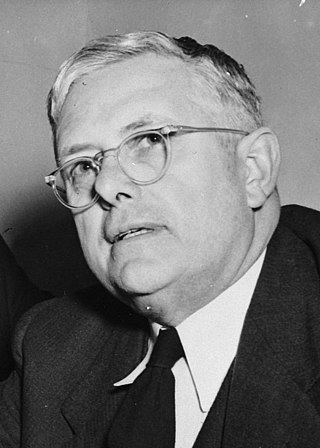
Herbert Vere Evatt, was an Australian politician and judge. He served as a justice of the High Court of Australia from 1930 to 1940, Attorney-General and Minister for External Affairs from 1941 to 1949, and leader of the Australian Labor Party (ALP) and Leader of the Opposition from 1951 to 1960. Evatt is considered one of Australia's most prominent public intellectuals of the twentieth century.
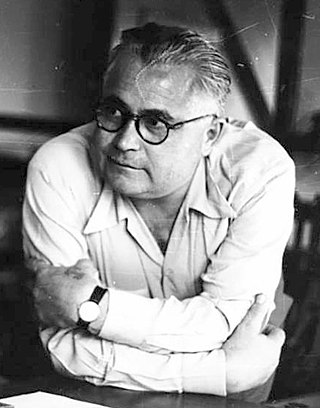
Vladimir Mikhaylovich Petrov was a member of the Soviet Union's clandestine services who became famous in 1954 for his defection to Australia.

Evdokia Alexeyevna Petrova was a Soviet spy in Australia in the 1950s. She was the wife of Vladimir Petrov, and came to prominence with him during the Petrov Affair.
Michael Rayner Thwaites, AO was an Australian academic, poet, and intelligence officer.

Sir Geoffrey Sandford Reed, KC was a justice of the Supreme Court of South Australia and the first Director-General of Security and head of the Australian Security Intelligence Organisation (ASIO).

The 1954 Australian federal election were held in Australia on 29 May 1954. All 121 seats in the House of Representatives were up for election, but no Senate election took place. The incumbent Liberal–Country coalition led by Prime Minister Robert Menzies defeated the opposition Labor Party led by H. V. Evatt, despite losing the two-party preferred vote. Although the ALP won the two-party preferred vote, six Coalition seats were uncontested compared to one ALP seat. The Psephos blog makes clear that if all seats had been contested, the Coalition would have recorded a higher primary vote than the ALP and possibly also a higher two-party preferred vote.
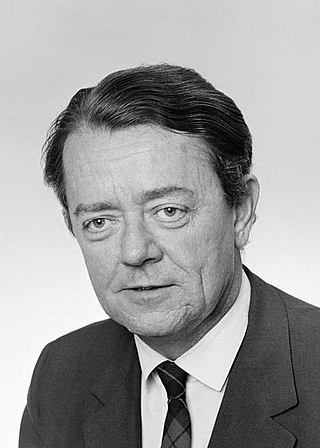
John Murray Wheeldon was an Australian politician and journalist. He was a member of the Australian Labor Party (ALP) and a senator for Western Australia from 1965 to 1981. He held ministerial office in the Whitlam government as Minister for Repatriation and Compensation (1974–1975) and Minister for Social Security (1975). He was known for his views on Australian foreign policy and after leaving politics became an editorial writer for The Australian.

Foreign relations date back to 1807, when the Russian warship Neva arrived in Sydney as part of its circumnavigation of the globe. Consular relations between Australia and the Russian Empire were established in 1857. Diplomatic relations between Australia and the Soviet Union were established in 1942, and the first Australian embassy opened in 1943. Due to the 2022 Russian invasion of Ukraine, relations became very tense after Australia imposed sanctions against Russia. Russia placed Australia on a list of "unfriendly countries", along with Taiwan, South Korea, Japan, Singapore, the United States, European Union members, NATO members, Canada, New Zealand, Switzerland, Micronesia and Ukraine.

Brigadier Sir Charles Chambers Fowell Spry was an Australian soldier and public servant. From 1950 to 1970 he was the second Director-General of Security, the head of the Australian Security Intelligence Organisation (ASIO).
Alan Douglas Joseph Reid, nicknamed the Red Fox, was an Australian political journalist, who worked in the Federal Parliamentary Press Gallery from 1937 to 1985. He is noted for his role in the Australian Labor Party split of 1955 and his coinage of the term "36 faceless men" to describe the members of the Australian Labor Party's Federal Conference.
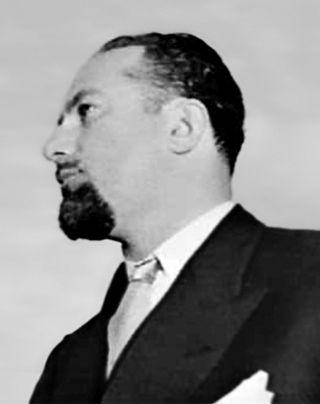
Michael Bialoguski was a Polish-Australian medical practitioner, musician and intelligence agent, who played a significant part in the 1954 Petrov Affair.
The Petrov Affair is a 1987 mini series based on the defection of Vladimir Petrov.

Ric Throssell was an Australian diplomat and author whose writings included novels, plays, film and television scripts, and memoirs. For most of his professional life as a diplomat his career was dogged by unproven allegations that he either leaked classified information to his mother, the writer and communist Katharine Susannah Prichard, or was himself a spy for the Soviet Union.
Peter Robert Woolnough Barbour was an Australian intelligence officer and diplomat. He was also the Director-General of Security leading the Australian Security Intelligence Organisation (ASIO) from 1970 to 1975.
Walter Seddon Clayton was a key organiser of the Communist Party of Australia (CPA) in the 1930s and 1940s and suspected of being the Australian-based Soviet spymaster code-named 'KLOD', although the Australian Security Intelligence Organisation (ASIO) and Britains' MI5 were not able to provide any conclusive evidence of this for fear of tipping off the Soviets that their cable traffic was being deciphered and read by Western intelligence agencies.

George Ronald Richards was a British-born Australian police officer and intelligence operative. In 1953 he was closely involved in Operation Cabin 12, arranging the defection of Vladimir Petrov from the Soviet Union to Australia. In 1954, he was appointed Deputy Director-General of the Australian Security Intelligence Organisation (ASIO), roughly equivalent to the FBI and MI5. He received the Order of the British Empire in 1957.
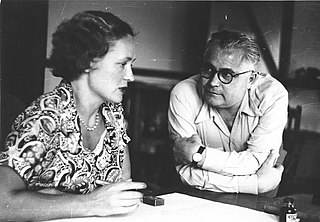
The Royal Commission on Espionage was a royal commission established on 13 April 1954 by the Australian government pursuant to the Royal Commissions Act 1902 to inquire into and report on Soviet espionage in Australia. The establishment of the commission followed the defection of Soviet diplomat Vladimir Petrov. Officially titled Third Secretary of the Soviet Embassy in Canberra, it was revealed that Petrov was in fact a lieutenant colonel in the KGB and in charge of espionage in Australia.














